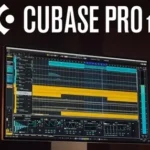Unlocking Superior Guitar Tones with 1971 Marshall 1960A Cabinet Impulses
If you’re a guitarist or audio engineer looking to elevate your sound, understanding guitar impulses can make a significant difference. This guide dives into the world of high-quality guitar tone sampling, focusing on impulses derived from a legendary 1971 Marshall 1960A guitar cabinet paired with the iconic 1971 Celestion G12M25 ‘pulsonic cone’ speakers. With sampling rates of 48 kHz and 96 kHz, these impulses offer unparalleled clarity for recording and live performances. ПЕРВАЯ ТЕСТОВАЯ ССЫЛКА
Capturing the Perfect Guitar Tone with Top Microphones
The secret to authentic guitar impulses lies in the recording setup, particularly the choice of microphones. A diverse range of high-quality mics can capture the nuanced tones of the Marshall cabinet, ensuring a rich and dynamic sound profile. Here are some of the standout microphones used in this setup: ВТОРАЯ ТЕСТОВАЯ ССЫЛКА
- Shure SM57: A classic dynamic mic renowned for its versatility in capturing guitar cabinets with precision.
- Sennheiser e906: Perfect for close-miking, delivering a punchy and detailed sound.
- Sennheiser MD421: Known for its warm tone, ideal for capturing the depth of a guitar amp.
- AKG C414 XLS: A condenser mic that excels in providing a clear and natural sound.
- sE Electronics X1R: A ribbon mic that adds a smooth, vintage character to recordings.
- Shure SM7B: Popular for its ability to handle high sound pressure levels with clarity.
- Sennheiser MD441: A dynamic mic with a wide frequency response for detailed audio capture.
- Behringer ECM8000: A budget-friendly condenser mic for accurate measurements.
- AKG C451: A small-diaphragm condenser mic for crisp and focused recordings.
By experimenting with these microphones, you can tailor your guitar tone sampling to match your unique style or genre, whether it’s rock, metal, blues, or jazz.
Power Amp Voicing: Shaping Your Signature Sound
Another critical aspect of crafting the perfect guitar impulse is the power amp voicing. This process allows you to fine-tune the tonal characteristics of your sound. The options available with this setup include:
- Idealized-NULL-Amp: A neutral setting that provides a clean slate for further tone shaping.
- Push-Amp: Adds a bit of grit and overdrive for a more aggressive sound.
- Tube-Amp: Emulates the warm, harmonic-rich qualities of a classic tube amp sound.
Selecting the right voicing can transform your recordings, giving you the flexibility to achieve anything from vintage warmth to modern high-gain tones.
Why Choose Guitar Impulses from a Marshall 1960A Cabinet?
The 1971 Marshall 1960A cabinet is a cornerstone of rock and metal history, known for its robust build and powerful sound projection. When combined with the Celestion G12M25 speakers, it delivers a tonal quality that’s hard to replicate. Using impulses based on this setup allows you to bring that iconic sound into your digital audio workstation (DAW) without needing the physical gear.
Whether you’re a professional producer or a bedroom guitarist, integrating these guitar impulses into your workflow can save time and enhance your recordings. Experiment with different microphones and power amp settings to find the perfect blend for your music.
Conclusion: Elevate Your Guitar Recordings Today
Guitar impulses based on the 1971 Marshall 1960A cabinet offer an incredible opportunity to achieve studio-quality sound at home. By leveraging top-tier microphones like the Shure SM57 and Sennheiser e906, along with versatile power amp voicing options, you can craft a signature tone that stands out. Start exploring these impulses at sampling rates of 48 kHz and 96 kHz to experience the difference for yourself.
Ready to take your guitar recordings to the next level? Dive into the world of guitar tone sampling and unlock endless creative possibilities!
![cabIR – MR-CB71 G12M25 (WAV) [IR library] – VST CRACK](https://smarttradex.net/wp-content/uploads/2025/06/5f6c3203cf681563a56bb51b1c93cde9-1.webp)

